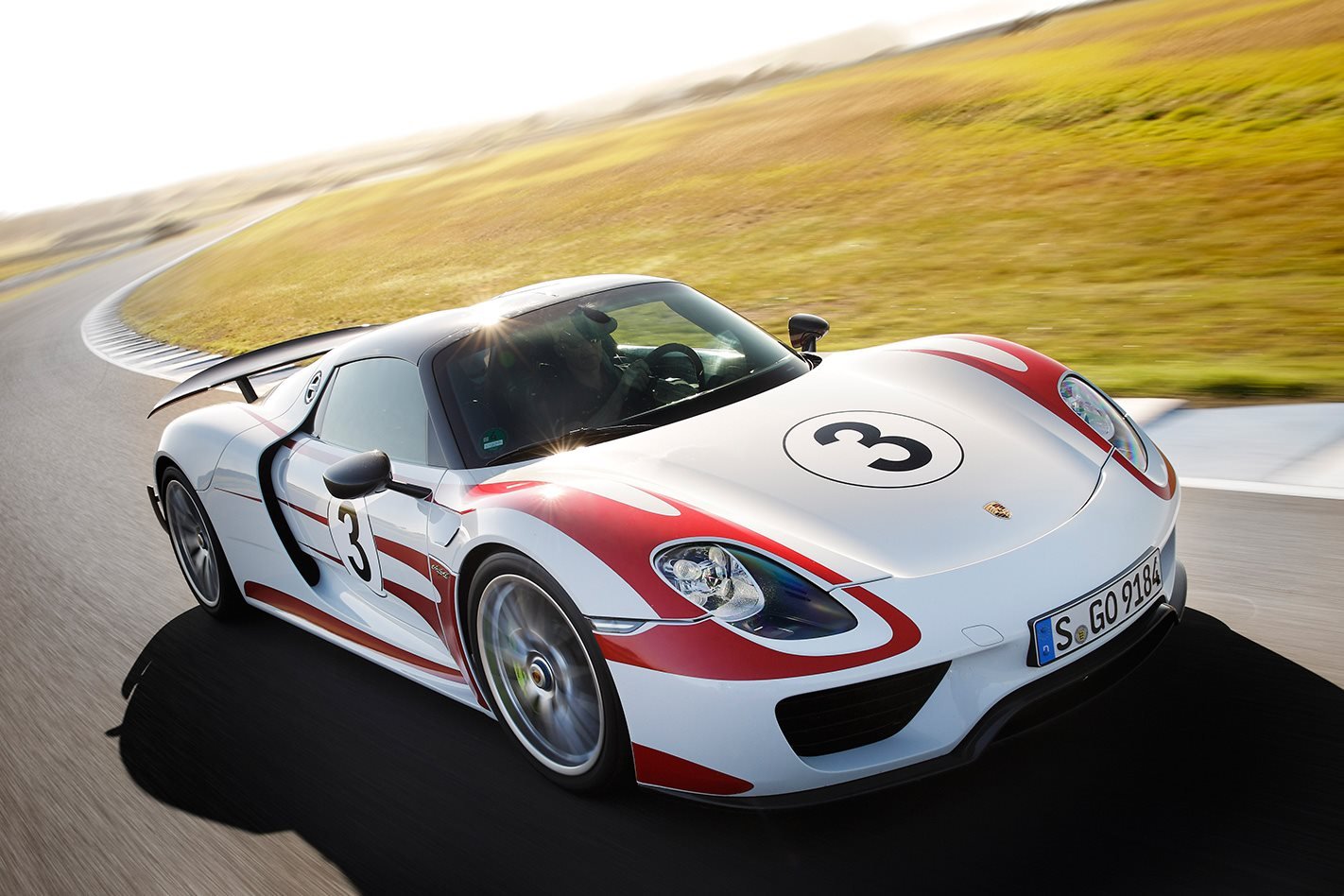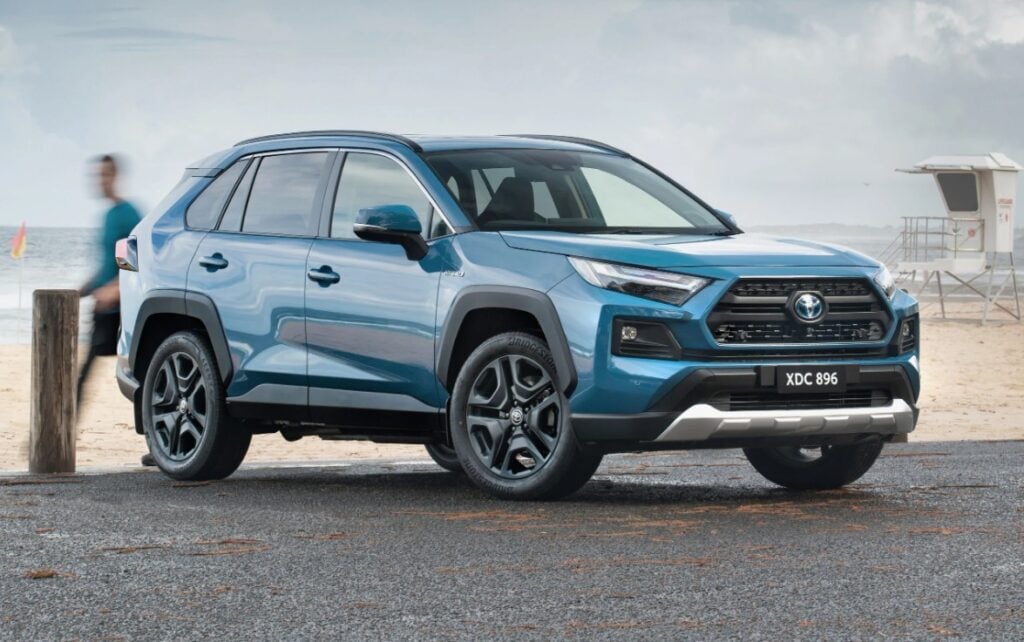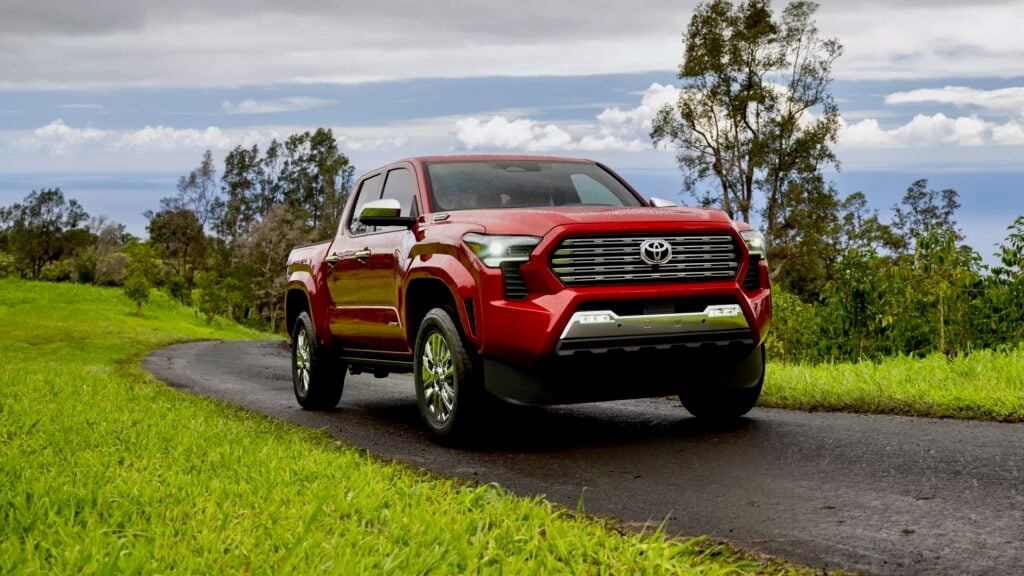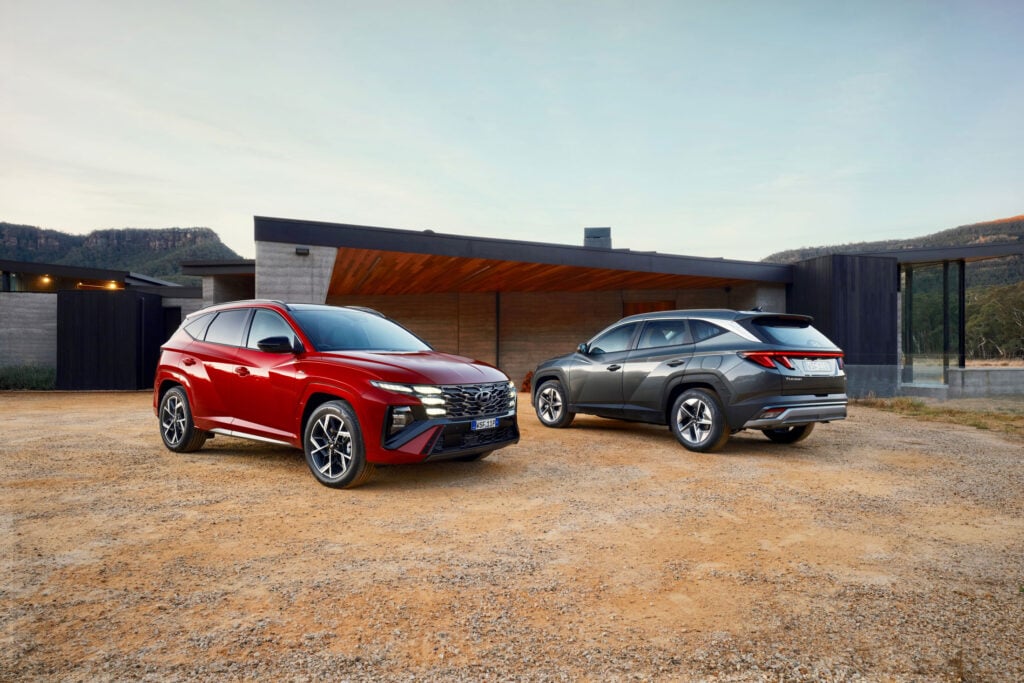We don’t know who designed the Phillip Island circuit, but we wouldn’t be surprised if they were the sort of person who watches car crash compilations on YouTube for fun.
It’s the kind of place where, if you fall off, you close your eyes, bend the brake pedal and do Hail Marys. Not the ideal venue, you’d think, to let a bunch of Aussie motoring hacks loose in the fastest and most expensive road-going Porsche ever.
Even on the oceanic tarmac at Dubai airport it would’ve been brave of Porsche to unleash journos in its $1.5m 918 Spyder, let alone a track with gravel traps the size of Olympic long-jump pits, with a secondary line of old tyres filled with mosquito larvae.
But, ah, those folks at Porsche aren’t so silly. They organised a pacecar: Craig Baird. In a Carrera Cup car. Which has MOTOR tasting fingernails. And puts into perspective just how fast the 918 – a car that seeks to distill Porsche at its engineering mightiest – really is.
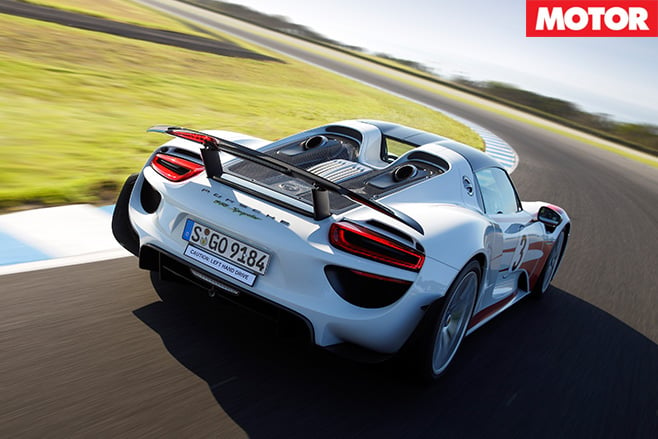
Oh, yes, a Clubsport makes more torque than that, you chortle. But a Clubsport doesn’t have an extra 210kW and 585Nm of electric motors. One at each end, fore and aft, work the 918’s lower revs like hum-quiet rockets.
The 585Nm is all yours from 1rpm. Together the V8 and electric motors make 652kW at 8500rpm and “between” 917Nm and 1280Nm, because to unleash such torque in the lower gears would be tyre-frying madness. The torque figure alone is enough to make you arch your head backwards and cackle. It’s plain silly in a car that weighs 1634kg.
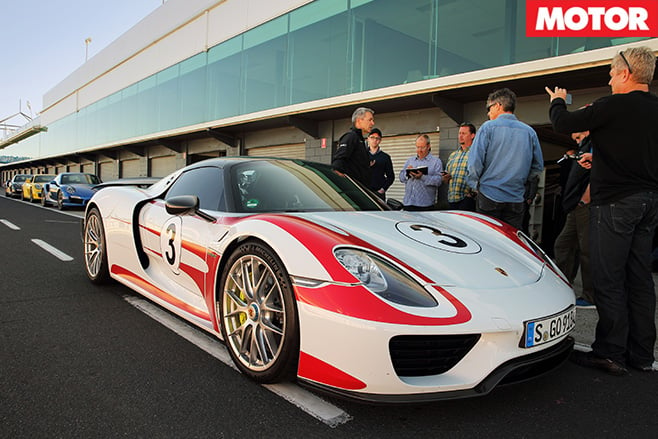
In its all-electric E-Power mode the 918 moves silently and can do around 30 kilometres on batteries alone. With 240V power the 918 will fully recharge in less than four hours. Plugged into a quick charging socket, 25 minutes.
And even in electric-only mode you’ll embarrass hot hatches at the lights – the 918 will do 0-100km/h in just over seven silent seconds. It feels fast, too, because there’s no engine roaring as it pulls through gears – it’s just silent, eerie thrust, the building of tyre noise and a subtle but cool electric motor whine.
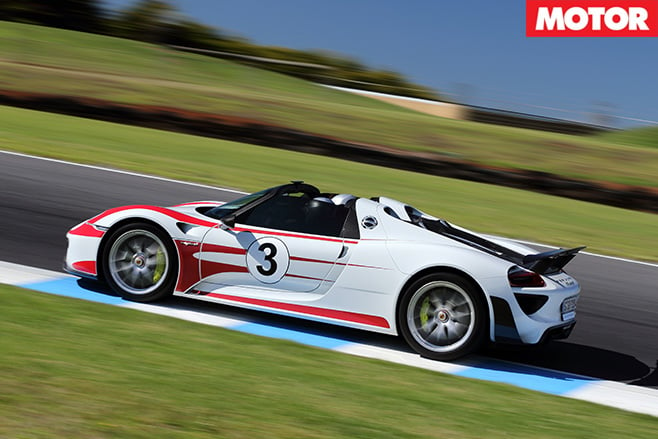
Sunk into the low, recessed seat, in a nest of glossy carbon fibre, the 918 is like sitting in a giant street luge. You feel 5mm off the deck. Two headlights menacingly bulge at the bottom corners of the windscreen.
We have just three laps to acclimatise to left-hand drive, a man in the passenger seat trying to shout over a 9000rpm V8 in a thick German accent, and four driving modes to sample. The 918 will do 290-odd km/h on the front straight, too, we’re told.
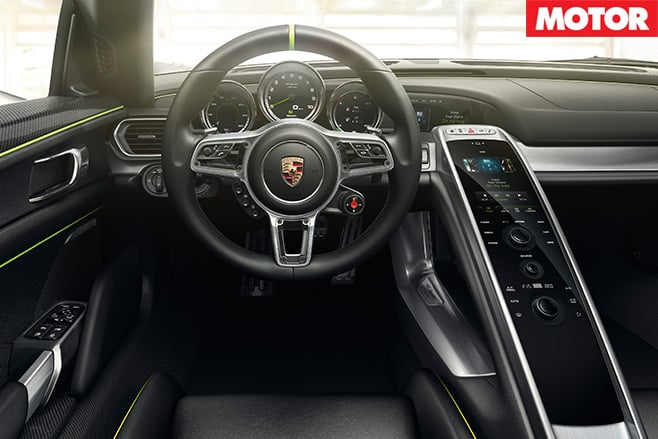
Fractions of a second later, it feels like all the blood from my eyeballs has sloshed to the back of my skull. I’m only just able to keep my vision on the suddenly-rapidly-approaching horizon. The thrust is just severe. Gnngghhll, I groan, as my chin presses into my chest. It’s disorientating, almost uncomfortable, borderline violent.
It sounds fast, too, rising in volume and menace as you roar through that giant tacho. At 7000rpm it feels like the noise and intensity have reached their climax. Yet there’s still two numbers to go on the tacho. At 9000rpm the thing is howling with rage, the distinctive sound of a flat-plane crank V8. In fact, it sounds similar to a 458 Italia, whose not-so-different engine uses the same crank configuration.
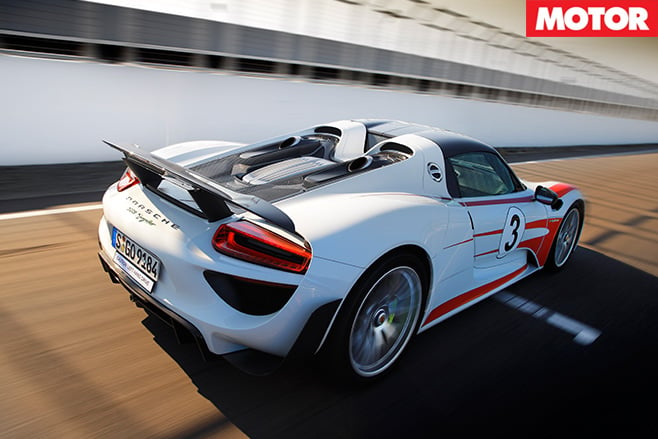
It takes both flat whites I had that morning to be able to mentally record every sensation of my three laps for later playback. And three laps, even at Phillip Island, doesn’t last long in something this quick.
A few corners later, the first thing I notice, perhaps obviously, is the steering. It’s meaty yet, at 2.3 turns lock-to-lock, lithe. It’s heavy in your hands, even if the information from the front tyres is coming to you through copper cable more than fibre-optic.
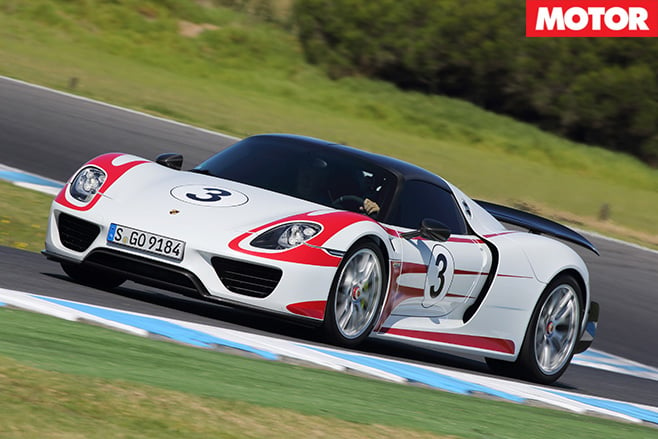
The brakes are truly otherworldly. Some cars’ brakes are too good for the tyres and headbutt the ABS. Others, the brakes won’t bother the ABS, there’s too much rubber. In the 918, the thing holding the brakes back is the fact you routinely miss leg day at the gym.
It feels like no matter how hard your input – and we’re talking trying-to-crack-a-marble-with-your-foot hard – the pedal is down there laughing at you. You press harder, harder, harder, expecting to feel a flutter of ABS, but instead it feels like the rear wheels are going to become airborne. The brakes are almighty.
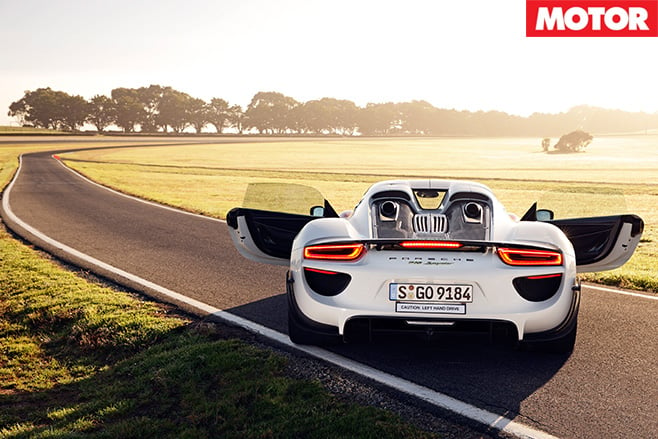
With the centre of gravity so low, body roll is almost non-existent; if the 918 had an aviation horizon gauge it’d barely budge. It corners so flat it would surely win the World Slalom Championship. Centrifugal cornering force feels like it’s channelled right into the tyre, permitting huge mid-corner speeds.
It’s easy to drive fast, too. Brake hard and late as you dare, or merely as much as your hamstring can muster. Tip in with that lithe steering, feel the immense lateral grip available, and if you balls-up your entry speed, there’ll be predictable, natural understeer, felt pretty easily through that gorgeous steering wheel.
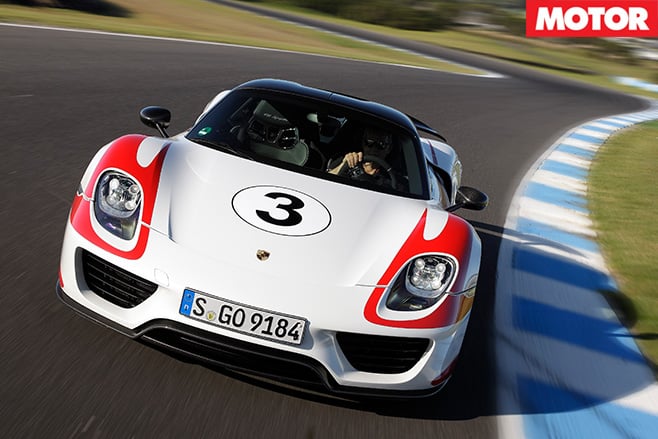
Towards the end of my three laps I discover, in fact, the stunning acceleration means it’s easy to barrel into the next corner too fast. I catapult out of the Island’s tight, right-hand Turn 10, only to arrive at the long, left-hand Turn 11 quicker than expected.
I turn the car expecting understeer, but in fact get oversteer, as the rear runs out of grip. It’s a little sudden, but still friendly, and makes me mentally thank the subtle but effective ESP calibration.
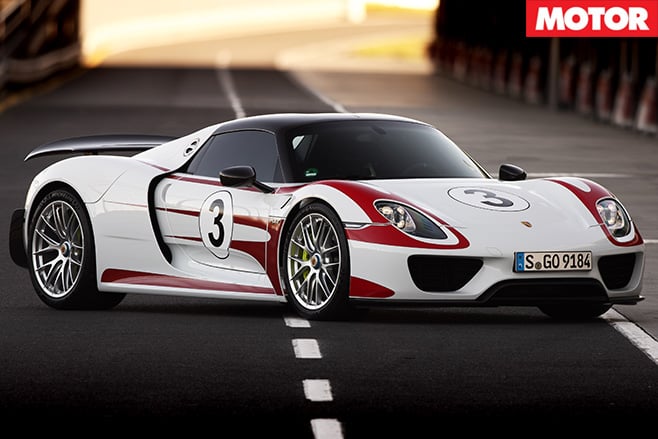
That’s not even considering it can wear numerplates overseas, can drive to the shops in silence using no fuel, yet would also make mincemeat of any PCOTY winner. Our time with it was maddeningly brief, yet we’re grateful it happened. And that we didn’t attempt any Phillip Island long jump.
5 out of 5 stars
Porsche 918 Spyder Weissach Pack Body: 2-door, 2-seat convertible Drive: all-wheel Engine: 4593cc V8, DOHC, 32v Bore/stroke: 95.0 x 81.0mm Compression: 13.5:1 Power: 652kW @ 8500rpm (combined) Torque: 917-1280Nm (overall system) Power-to-weight: 395kW/tonne 0-100km/h: 2.6sec (claimed) Top Speed: 345km/h (claimed) Consumption: 3.1L/100km (claimed) Emissions: 72g/km CO2 (claimed) Transmission: 7-speed dual-clutch Weight: 1634kg Suspension: double wishbones, coil springs, adaptive dampers, anti-roll bar (f) multi-links, coil springs, adaptive dampers, anti-roll bar (r) L/W/H: 4643/1940/1167mm Wheelbase: 2730mm Tracks: 1664/1612mm (f/r) Steering: electrically-assisted rack-and-pinion Brakes: 410mm ventilated/drilled ceramic discs, 6-piston calipers (f); 390mm ventilated/ drilled ceramic discs, 4-piston calipers (r) Wheels: 20 x 9.5-inch (f); 21 x 12.5-inch (r) Tyres: 265/35 ZR20 (f); 325/30 ZR21 (r) Michelin Pilot Sport Cup 2 Price: A$1,500,000 (approx) Positives: Stunning acceleration, the noise it makes at 9150rpm, handling, brakes… Everything Negatives: You need to be loaded to own one, even then they’re all sold out and never came in right-hand drive

